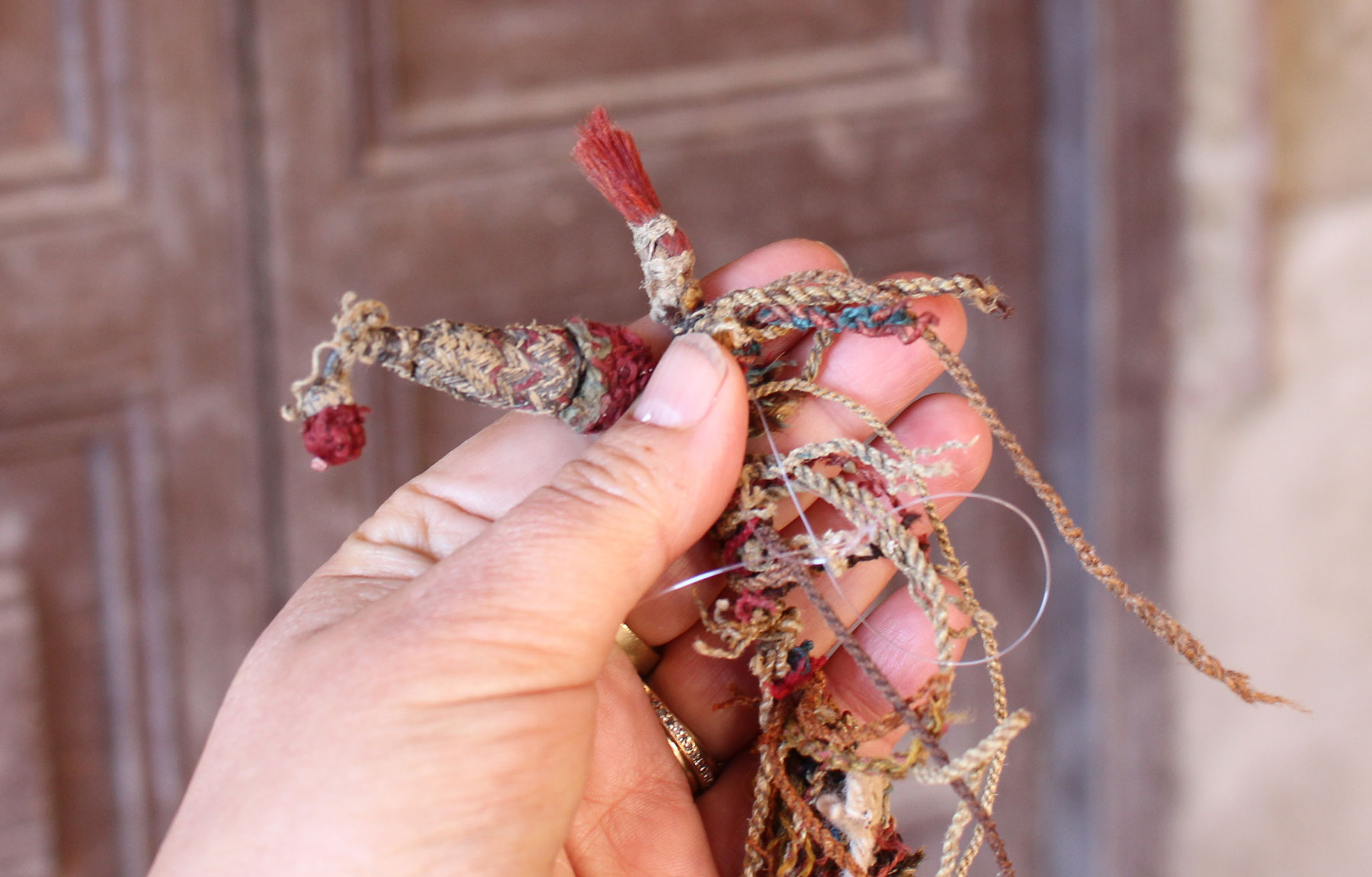Quipus are twisted cord devices that were widely used for communication and recording information during the Inca and Spanish periods and in some remote locales into the 20th century. Hidden in a wooden box in a secret chamber under the altar of the colonial church of the Andean village of Collata in central Peru lie two quipus, the knotted and coloured cords used as ‘writing’ and regarded as sacred by the villagers who guard them today. They were created in the 1780s as revolutionary epistles calling for revolt in the name of ‘the Inca emperor’, the recently executed José Gabriel Condorcanqui, today known as Túpac Amaru II. In these two colourful and sensuous Quipu texts, we see the ancient and modern Andean art of quipu-making united with the worldwide revolutionary fervour of the late 18th century.
From the over one thousand pages of testimony from Spanish interrogations of the prisoners, we can ascertain when the Yacapar quipu was created. During the festival of Corpus Christi in 1782, two men holed up on a farm outside of San Mateo de Otao, which is adjacent to Collata. The two men had discussed revolution for years, but during this week in late June they planned their uprising. The men were alphabetically illiterate, unable to read or write in Spanish, so they created physical letters or Quipus for the leaders of neighbouring towns, calling on them to revolt. It is apparent that the Yacapar Quipu, signed with the name of the Yacapar clan or ayllu, is one of the Quipu letters created at this time.





